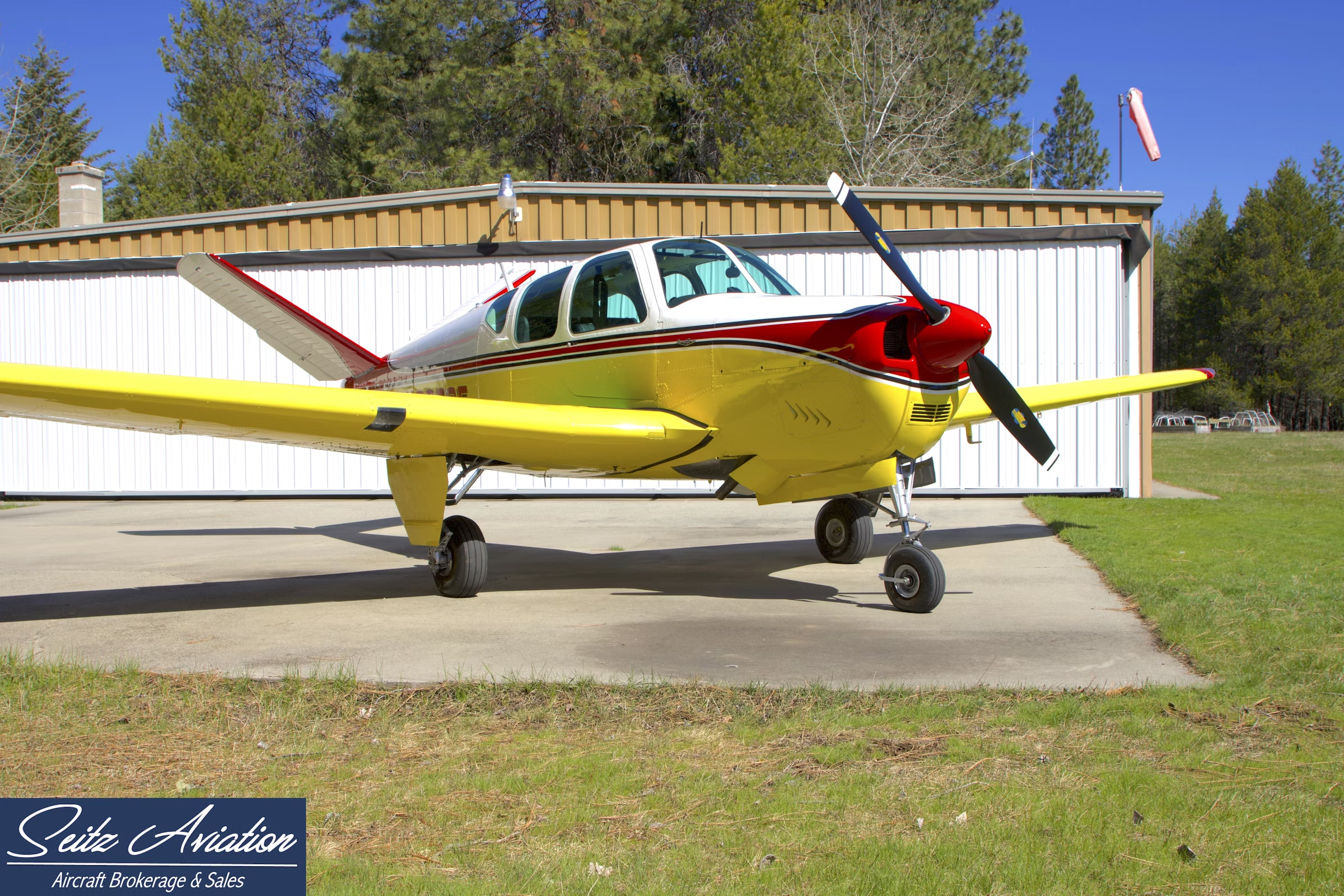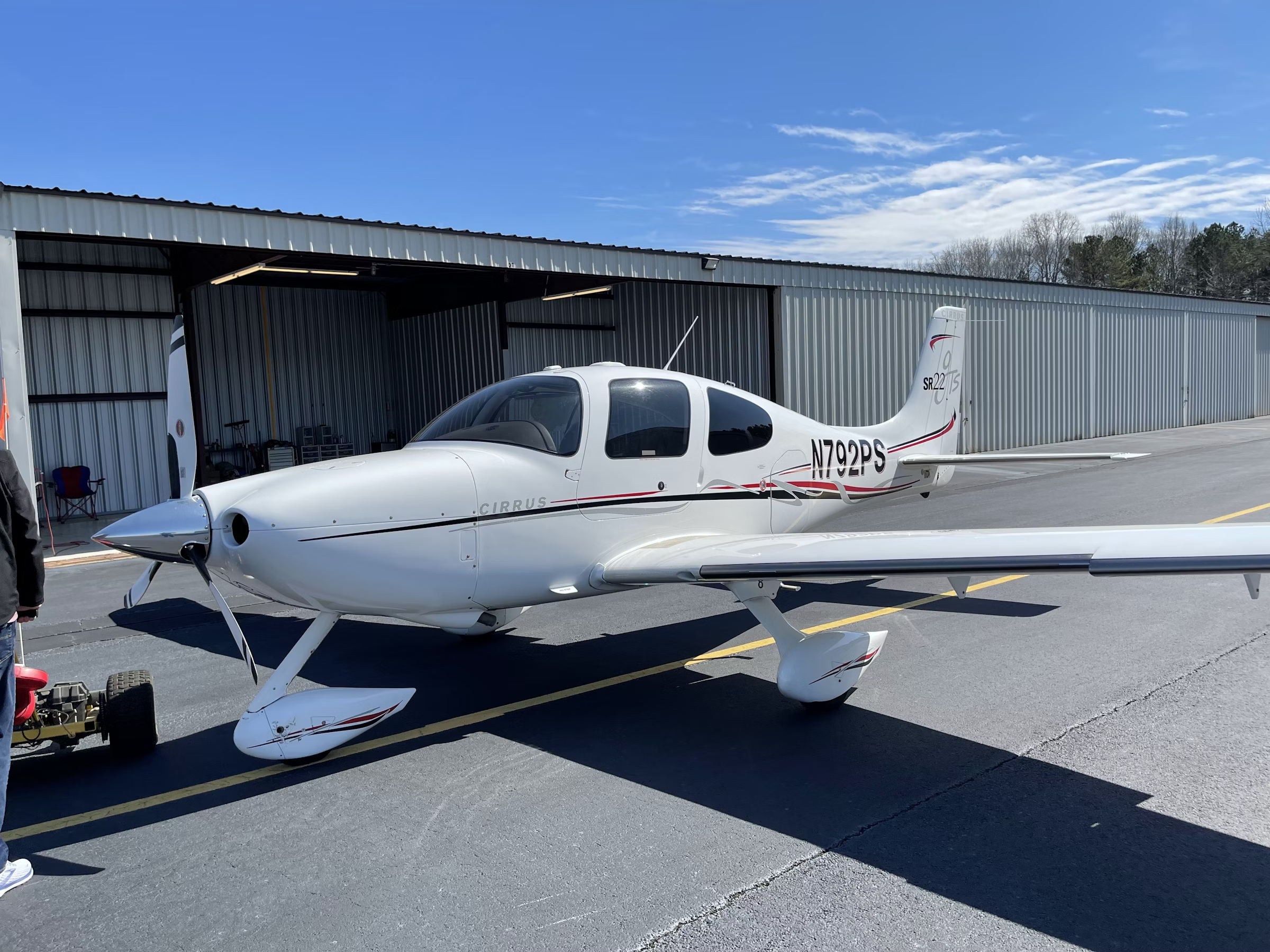
Piper Matrix Carl A. Miller
Many piston singles have much of the avionics capability of turbine-powered airplanes, but the Piper Matrix now has it all. Late last year Piper certified the same Garmin G1000 flat-glass avionics system in the unpressurized Matrix, and its pressurized sibling, the Mirage, that had been offered earlier in the turboprop Meridian. The claim that the Matrix and Mirage piston airplanes match a turbine is accurate and complete.
A G1000 flat-glass cockpit is hardly new in piston airplanes because nearly every model in current production uses avionics derived from that system. But I can't think of other piston models that offer such complete capability and redundancy.
The Matrix cabin is the same size that it has been since the PA-46 series was launched with the introduction of the Malibu in the 1980s. But as soon as I settled into the left seat of the Matrix, I felt like I was in a much bigger airplane. In fact, it felt like I had just stepped into a newly designed light jet.
Much of that feeling comes from the standard three flat-glass displays instead of the two that are standard in other pistons that I can think of. And the MFD in the center is the huge 15-inch model that Garmin first built for light jets, with a 10.4-inch PFD on each side.
Then there is the flight guidance panel with dedicated knobs and buttons for selecting each mode and value used to fly the airplane through the Garmin automatic flight-control system. Some current production jets lack the logical design and central panel placement of the flight guidance panel in the Matrix.
The redundancy of the Matrix and Mirage avionics systems is as complete as in the jets. A handful of other piston singles have dual electronic gyro systems (AHRS) and a second air data computer (ADC) that are now standard in the Matrix and Mirage, but the Pipers have, as do the jets, the capability to switch any data from one side to the other after a failure and continue full-capability operation of the displays and the autopilot system.
It is a terrific and welcome surprise to see a full engine-instrument crew advisory system (EICAS) in the Matrix, complete with dedicated master caution and warning lights. With EICAS, all system status and warning information is displayed on the flat glass in plain language with no need for gauges or system warning lights. The alert messages are color-coded for urgency and presented in vertical ranking in the order of importance. Designing EICAS into an airplane is a costly and complex process, so there are many current production jets that lack the full capability.
Of course there are the capabilities you would expect in any glass cockpit, such as display of traffic and terrain warning; Garmin's "SafeTaxi" chart that shows your progress over the airport; XM satellite weather; and Garmin's synthetic vision, which is becoming more widely available all of the time.
At first, Piper had considered offering a stripped-down version of the G1000 cockpit from the turbine Meridian in the Matrix and Mirage. But leaving out redundant displays and sensors would have required an all-new certification effort. It also became clear that pilots buying the Matrix or Mirage are not interested in less of anything in the cockpit. So the very complete G1000 system from the turboprop Meridian — with minor display differences for engine indication and so on — was adopted for the pistons as standard equipment.
The Matrix has been popular with pilots since its introduction in 2008. The six-seat cabin is undoubtedly the most attractive aspect of the airplane, but pilots also appreciate the reduction in complexity compared with the pressurized Mirage, or turboprop Meridian.
Insurance underwriters have also contributed to the acceptance of the Matrix because lower-time pilots — who would pay more for coverage, if they could even get it, in the pressurized Mirage — are more insurable in the Matrix. For a host of reasons that are not easy to explain, pressurized piston airplanes have posted a worse safety record than their unpressurized siblings. The insurance companies have noted this and set their rates and pilot experience standards accordingly.
The Lycoming turbocharged 540 engine in the Matrix is essentially the same as in the Mirage, but air is not tapped from the turbo compressors to pressurize the cabin. That means the Matrix easily matches the speed of the Mirage, but pilots will need to use supplemental oxygen above 12,500 feet in the Matrix. The reality is we all spend more hours flying with a headwind than with a tailwind. The math just works out that way. So most of the time a Matrix pilot will be happy flying at an altitude that doesn't require oxygen into that lower headwind. When the wind turns big in your favor, it may pay to climb and don the cannula. And on every flight, the cabin size and baggage capacity of the Matrix are always the same as those of the Mirage, but there is more payload available because empty weight of the unpressurized airplane is less.
My impression of size and sophistication of the Matrix was also enhanced by the exotic Hartzell carbon fiber scimitar-shape propeller. The composite blades save weight and also make possible the dramatic curved blade shape that increases efficiency and, to me at least, seems to reduce vibration. The Matrix ranks at the top of any piston single I have flown for smoothness.
Piper test pilot John Kronsnoble, who handled much of the developmental flying for the G1000 glass system in all three models of the PA-46, was in the right seat to introduce me to the new system. I instantly felt as though I was in the Cessna Mustang light jet instead of another G1000 piston airplane, because the glass displays are the same and the controls for the system are similar.
A nice pretaxi feature is fuel quantity synchronization with a single button push. The fuel on board as measured by the gauges is shown on the MFD, and if you agree that is correct, that becomes total fuel available in the system memory. As you fly, the system subtracts fuel burned and shows fuel amount and time remaining. It warns when fuel is low and announces when it's time to switch tanks in flight.
Another difference compared with other G1000 systems in many other piston airplanes is that you use a centrally mounted alphanumeric keypad to enter most data into the system. Radio frequencies can be tuned with the knobs in the normal way, but most navigation entries are made using the keyboard.
Not long after the gear was up on takeoff, I engaged the autopilot to track the assigned heading and to hold the target climb airspeed, which the system does with great precision. A workload-relieving feature is an automatic rudder trim capability that uses the yaw damper servo to keep the "ball" centered during airspeed and power changes. You may need to fine-tune rudder trim once level in cruise, but during maneuvering, the automatic system keeps the trim close so the pilot has one less distraction.
The Garmin GFC 700 autopilot that is integrated into the system flies with great precision and smoothness, as it does in the many other airplanes where it is available. The precision of attitude from the AHRS electronic gyros, and exact airspeed, altitude and vertical speed from the digital air data computers, allows the autopilot to do its job perfectly. And unlike with autopilots in previous versions of the PA-46, the maximum bank angle is restricted to around 20 degrees, while some of the previous autopilots would roll to 30 degrees or maybe more looking for a standard rate of turn.
Once you move beyond basic singles, nobody cares about standard rate of turn. In fact, that information is not even available in jets or some turboprops. Instead, pilots are taught to limit bank angle to 30 degrees for maneuvering, less at higher altitudes or when flying near Vref approach speed. Jet autopilots follow the same limits.
The 20-degree-or-less banked turns the Garmin system makes in the Matrix are comfortable and welcome for both pilots and passengers even though the rate of turn won't be "standard" at higher airspeeds.
The old emphasis on standard-rate turn was a crutch that made up for lack of information on precise ground tracking and that compensated for failure of the attitude indicator. Without attitude information available, the pilot of older airplanes only could hold standard-rate turn as indicated by a turn coordinator or turn-and-bank indicator for a specific time in order to roll out approximately on the desired new heading.
Attitude and heading information in the Matrix is totally redundant, so the loss of both AHRS on one flight is unlikely. And the GPS navigation systems with their WAAS-aided accuracy know the exact path of the airplane over the ground, so they predict and anticipate that path based on the turn rate available at 20 degrees of bank or less, rather than on an arbitrary standard change rate of 180 degrees of heading per minute.
This is a long explanation of how the G1000 system in the Matrix, as in other more recently certified installations, can fly all IFR procedures automatically at a variety of airspeeds without ever caring about a standard-rate turn. Turn anticipation to intercept a new leg of a procedure and perform procedure turns, holding-pattern entries and all other IFR maneuvers is automatic and flown with great precision either with the autopilot coupled or by following the flight director commands.
I know that disregarding the importance of a standard-rate turn is heresy to new instrument pilots and their instructors, but believe me, as you advance in your flying, you will forget all about rate of turn and fly by attitude.
Of course the system has the full WAAS glideslope capability that allows the Matrix to fly coupled LPV or LNAV with V approaches, which we did back into Vero Beach. We followed a business jet that was flying the VOR approach because it apparently didn't have WAAS capability, but the G1000 system in the Matrix tracked the GPS-calculated glidepath down to about 50 feet above the runway, where I punched the autopilot off for landing.
The switch to the complete G1000 system changed the Matrix standard price to $869,000. It is only $50,000 more compared with the previous avionics package that lacked complete autopilot integration and full sensor and display redundancy. The Mirage is now priced at $997,500 with the same equipment. When typical options are added, the 2010 Mirage can cost as much as $140,000 less than the 2009 version.
For the increase in price, the Matrix or Mirage owner gets the most turbine-like single available, and an airplane built with excellent quality in every detail. Piper's workmanship standards are at an all-time high for the company, and the new cockpit completes the transformation of the airplanes into one of the most desirable piston singles available.

Sign-up for newsletters & special offers!
Get the latest FLYING stories & special offers delivered directly to your inbox






